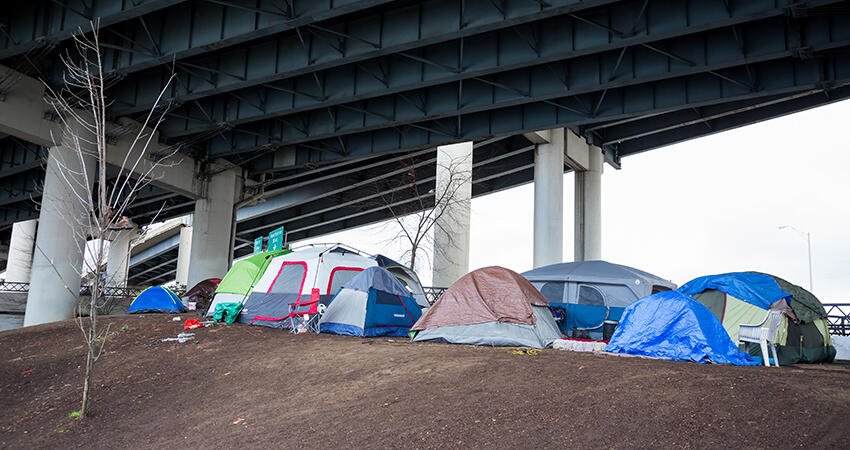
(Joshua Rainey Photography/Shutterstock)
Centering Racial Equity Is Critical to Ending Homelessness
- Title:
-
Racial Inequity and Homelessness: Findings from the SPARC Study
- Author:
-
Jeffrey Olivet, Catriona Wilkey, Molly Richard, Marc Dones, Julia Tripp, Maya Beit-Arie, Svetlana Yampolskaya, Regina Cannon
- Source:
- Publication Date:
-
2021
Homelessness is increasing in America, and research shows that because of discriminatory policies in housing and land use, Black people disproportionately experience homelessness. For Native people, forced removal and relocation specifically have caused and perpetuated homelessness. Yet, few studies have focused on how discrimination and racism may shape one’s experience with homelessness services. To fill this gap, this study examined how race and ethnicity are associated with housing outcomes.
The study focused on eight cities that participated in the Supporting Partnerships for Anti-Racist Communities (SPARC) Initiative between 2016 and 2019, which aimed to better understand how structural racism relates to homelessness. The authors employed a mixed-methods approach. Researchers used quantitative data from Homeless Management Information Systems and the American Community Survey to examine prevalence in the homelessness system and predictors associated with exiting the homelessness system, including returning to an unhoused situation or exiting into more permanent housing. The authors also conducted 195 qualitative interviews with people of color who were currently, or had recently, experienced homelessness to better understand their experience receiving homelessness services.
The study found Black and Native Americans were overrepresented in populations experiencing homelessness compared with the general population, as well as the proportion of people living in poverty. Asian, Native Hawaiian or Pacific Islander, and White categories were underrepresented compared with the general population and the population living in poverty. This finding suggests poverty alone does not explain the racial disparities in homelessness. The authors found lack of access to safe, decent, and affordable housing; employment paying a living wage; criminal justice involvement; behavioral health challenges; and family stabilization issues contributed to homelessness.
Key findings
- Criminal justice histories, combined with discrimination from landlords and employers, created barriers for people of color attempting to avoid homelessness.
- Multisystem involvement and intergenerational poverty strained families’ abilities to stay together and successfully avoid or exit homelessness.
- Respondents reported unconscious bias affected their treatment within the homelessness system and that they were treated differently than white peers seeking treatment and support.
- Race was a predictor of whether someone exited homelessness but varied by household type and exit destination. Black young adults were 69 percent more likely to exit back into homelessness than their white counterparts. Native and Asian young adults were 56 percent and 70 percent less likely to exit into a permanent housing situation than their white counterparts.
- Young adults and young adults of color were heavily overrepresented in the population experiencing homelessness, ranging from 1.67 to 7 times larger than the population overall. Native Americans were 1.25 to 11 times more likely to experience homelessness than the population overall.
- Single adult women were 4 times less likely to exit into homelessness than their male counterparts.
Policy implications
- The findings suggest the disproportionate rates of homelessness among people of color are a symptom of the failure of social and economic systems to provide equal opportunity for all.
- The authors suggest communities should employ equity-based responses to homelessness to address how society disadvantages people of color.
- Interventions that explicitly address racism at the local, state, and federal levels will be most successful when informed by people of color with lived experience.
- The authors believe addressing homelessness requires investment in communities of color and reparations for past harms and exclusion, underscoring the need for expanding the social safety net to make housing more affordable and more equitable.
- Other systems, such as health care, education, and foster care, have an important role in identifying risk of homelessness.
- To help homelessness systems reduce racial inequity, there must be a focus on diversifying staff, leadership, and boards of directors and including significant representation from people of color with lived experience.


